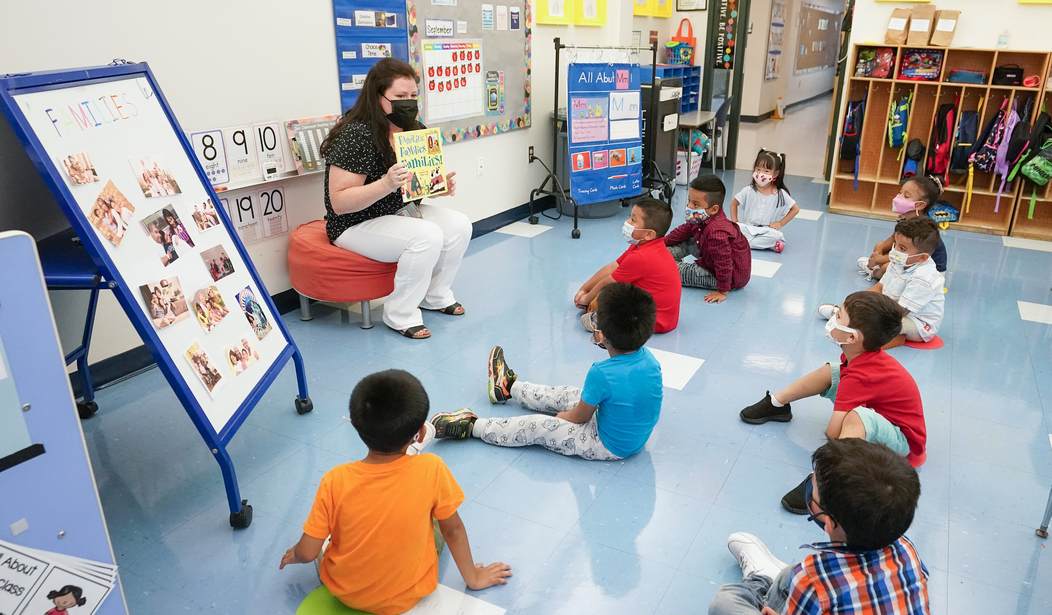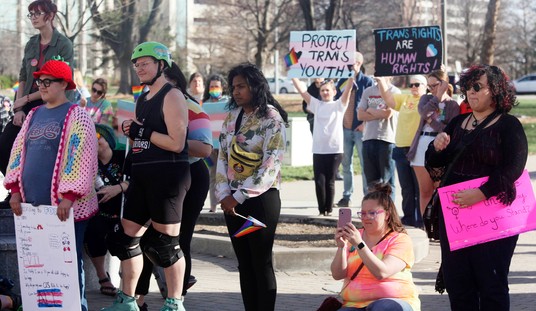Once again, academic achievement scores for American children are down. And once again spending is up.
The newly released National Assessment of Educational Progress (NAEP) scores for 13-year-olds for the 2022-2023 school year show a four-point decline in reading ability and a nine-point decrease in mathematics skills since the previous assessment in 2019-2020. Those numbers on “The Nation’s Report Card” are respectively seven and 14 points below the scores U.S. children achieved 10 years ago—decreases of about 2.7 percent and 4.9 percent, respectively.
From 2020 to 2022, reading scores for 9-year-olds suffered the largest decline since the 1990s, and those for math scores decreased for the first time ever. The deterioration began before the COVID-19 school shutdowns, it is important to note. “Average scores for 13-year-olds in both reading and mathematics were lower in 2020 compared to the last LTT assessments in 2012,” the NAEP reported at the time, using pre-pandemic data. “Compared to the previous LTT assessments in 2012, the 2020 reading scores for both 9 and 13-year-olds performing at the 10th percentile were lower. In mathematics, scores were lower in 2020 for 9-year-olds at the 10th and 25th percentiles and lower for 13-year-olds performing at the 10th, 25th, and 50th percentiles compared to scores in 2012.”
The current numbers confirm all those losses are continuing, in a long-term downward trend.
The response from the education establishment has been all too predictable: blaming the declines on the pandemic and calling for more money, usually euphemized as “resources,” “investment,” and other alluring terms.
President Biden’s education secretary, Miguel Cardona, scored a perfect 100 on the excuse meter, saying, “The latest data from the National Assessment of Educational Progress is further evidence of what the Biden-Harris administration recognized from Day One: that the pandemic would have a devastating impact on students’ learning across the country and that it would take years of effort and investment to reverse the damage as well as address the 11-year decline that preceded it.”
Recommended
Similarly, Cheryl Bost, president of the Maryland State Education Association, told WBAL-TV in Baltimore, “We need resources, we need staffing, we need support, but most of all, we need respect for public education,” in response to the state’s academic failures.
Baltimore’s schools don’t provide much with what they already have. “Project Baltimore found, in 23 Baltimore City schools, there were zero students who tested proficient in math. Not a single student,” Fox 45 News reported earlier this year. “In a new study released by WalletHub, Baltimore City ranks 146 out of 149 for lowest high school graduation rates among major US cities in 2023,” another Fox 45 News story noted.
The problem is not a lack of money. “[T]his academic year city schools spent about $21,000 per student, which is more than most schools in the country,” Fox 45 reports.
The notion that the solution to poor academic performance is more money has been a teachers union talking point for decades. It’s dead wrong.
The average spending per pupil nationwide increased from $10,608 in 2012 to $14,347 in 2021 in inflation-adjusted dollars, a 14.3 percent rise. What did we get for that larger “investment” of “resources”? A 2.7 percent decrease in reading performance and a 4.9 percent drop in math ability.
Contrary to popular belief, teachers are far from underpaid. “All in all, with various perks included, a teacher makes on average $68.85 an hour, whereas a private sector worker makes about $36 per hour,” education analyst Larry Sand notes.
If student performance were dependent on teacher compensation, we would be living in a nation of young Einsteins.
As the numbers show, our education system is broken. Spending more money only compounds the losses.
Given this poor record, enrollment in government-run K-12 schools has been declining since 2020, with parents moving their children to charter schools, private schools, and homeschooling. Only 36 percent of parents across the nation say they want to send their children to government-run public schools, yet 83 percent of American children attend such schools.
Fortunately, states are giving families greater opportunities to opt out of the broken government-run education system. Currently, 13 states have education savings account programs that allow families to use their state-assigned money on a variety of education services, according to EdChoice. There are 24 states with tax-credit scholarships or ESAs, and 14 states and Washington, D.C., have school voucher programs that help parents send their children to private schools, EdChoice reports.
The high costs and low performance of government-run schools are inspiring reforms across the nation. Lawmakers who refuse to recognize the hunger for reform may learn an important lesson in next year’s elections.
S. T. Karnick is a senior fellow and director of publications for The Heartland Institute, where he edits Heartland Daily News and writes the Life, Liberty, Property e-newsletter.






















Join the conversation as a VIP Member